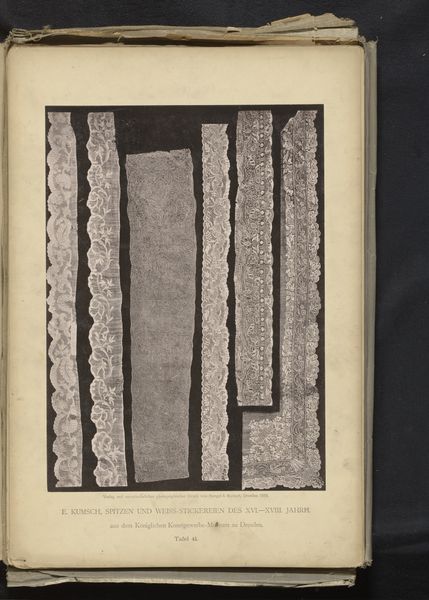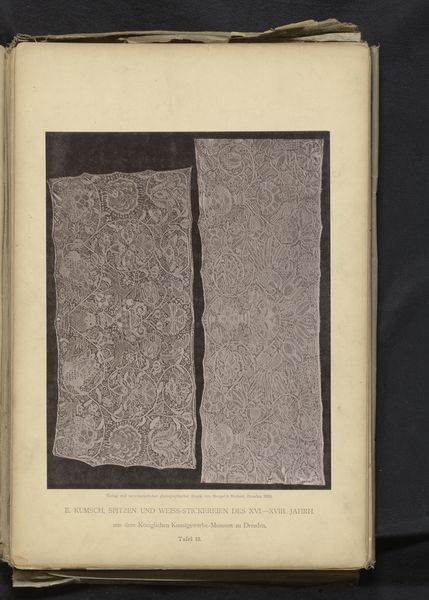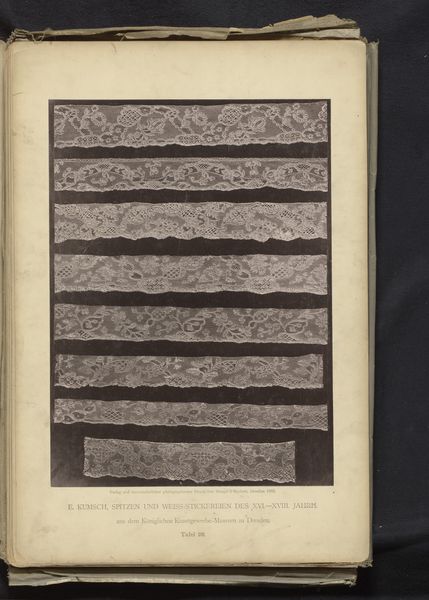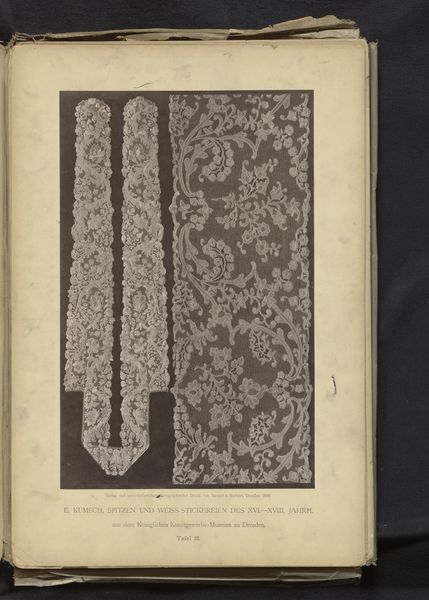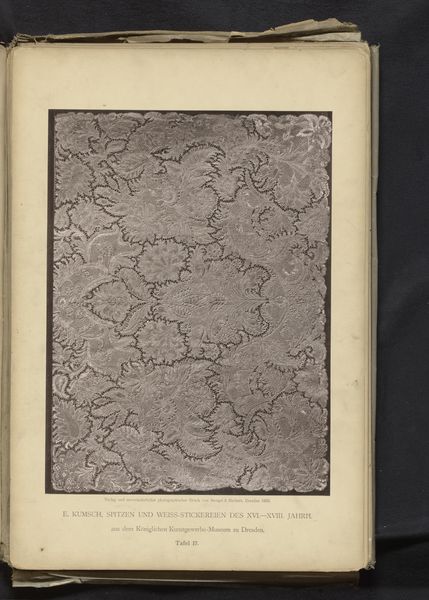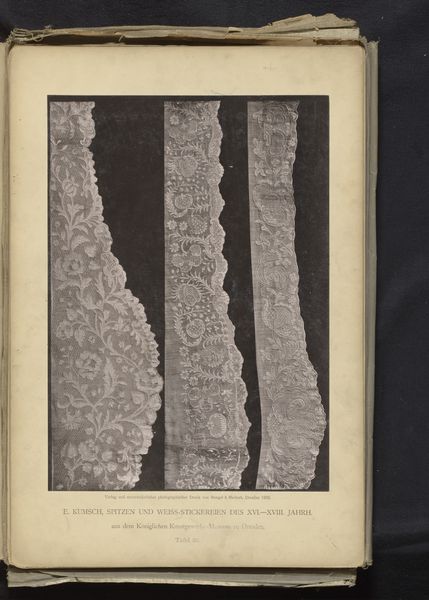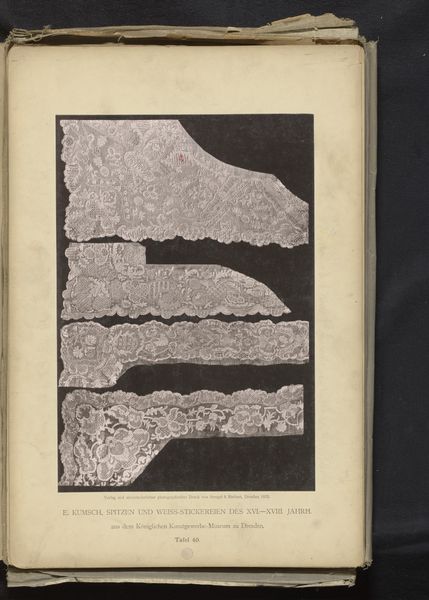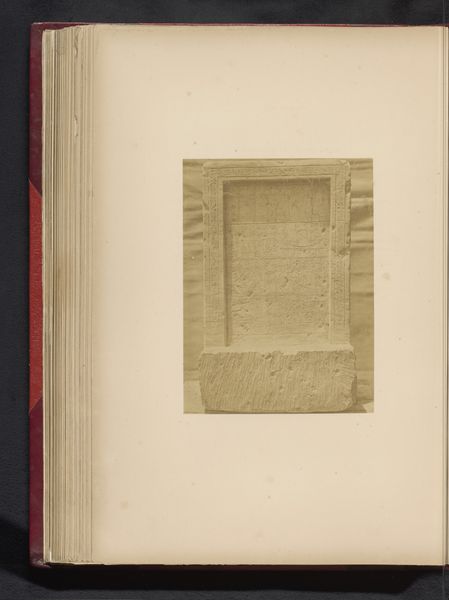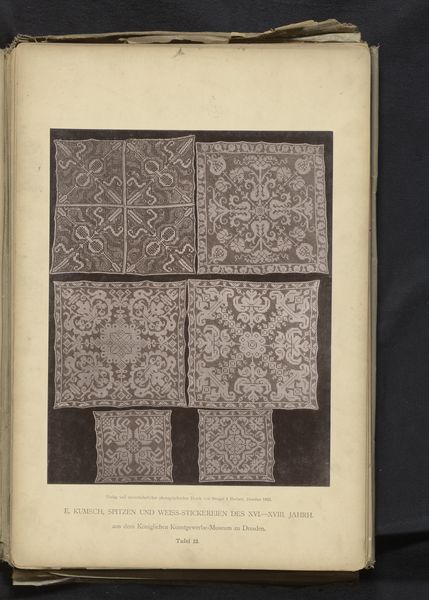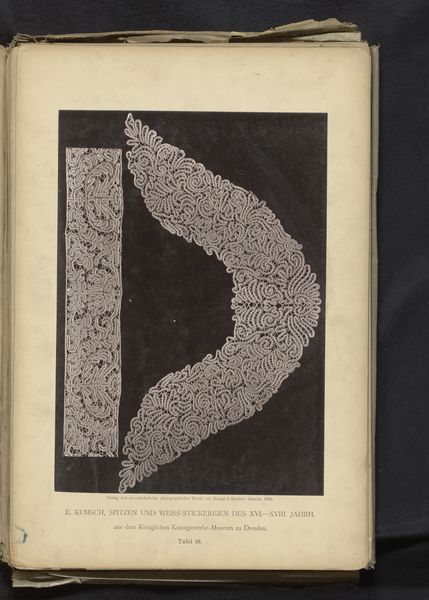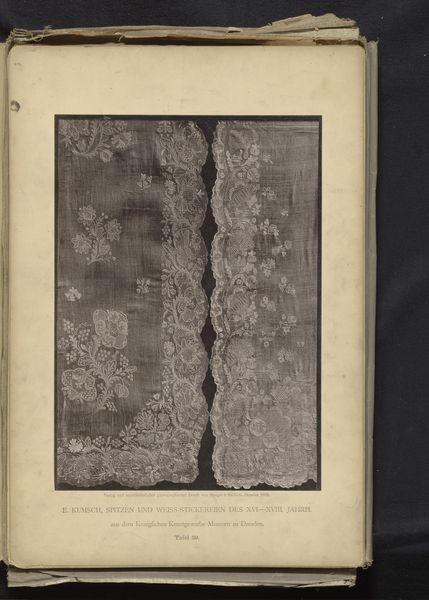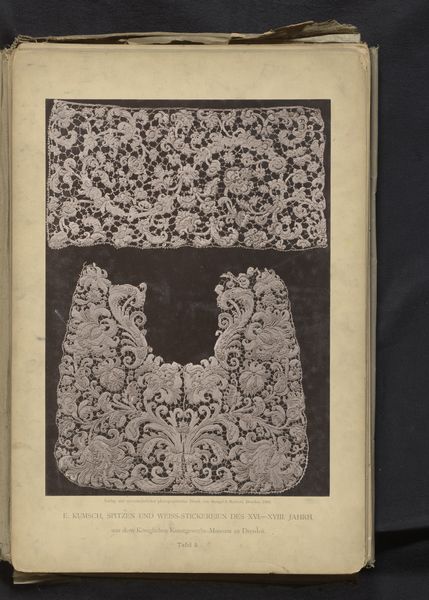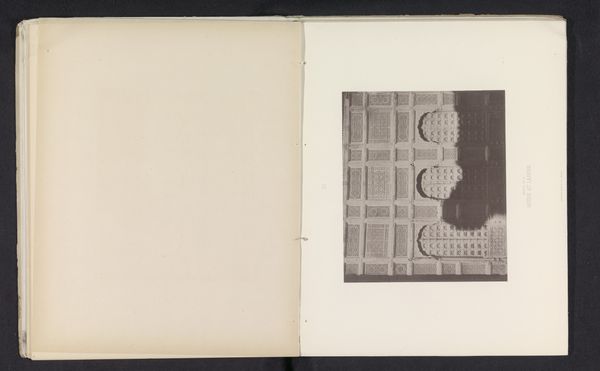
Vier stukken Duits kant uit circa 1770, uit de collectie van het Kunstgewerbemuseum in Dresden, Duitsland 1888
0:00
0:00
anonymous
Rijksmuseum
graphic-art, print, textile, paper, engraving
#
graphic-art
# print
#
textile
#
paper
#
historical fashion
#
decorative-art
#
engraving
Dimensions: height 350 mm, width 258 mm
Copyright: Rijks Museum: Open Domain
This is a photograph of four pieces of German lace, dating back to around 1770. The lace originates from the Kunstgewerbemuseum in Dresden, Germany. The anonymous maker of this lace lived in a society deeply structured by class and gender. During the 18th century, lace was more than just ornamentation, it was a marker of status and wealth. The intricate designs speak to the highly skilled labor involved in its creation, often performed by women. It offers an intimate glimpse into their lives, their economic activities, and their artistic contributions, all while working within the confines of their gendered roles. Consider the tension between the beauty and luxury associated with lace and the labor conditions of its makers. What stories do these delicate designs tell about gender, class, and the hidden histories embedded within the folds of fabric?
Comments
No comments
Be the first to comment and join the conversation on the ultimate creative platform.
